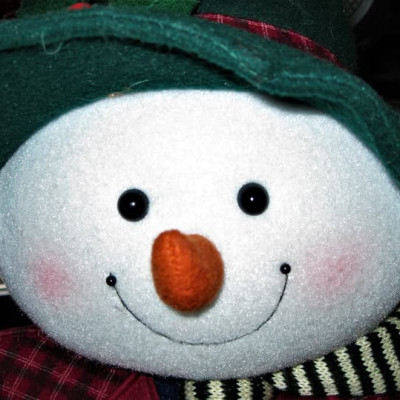Master the Art of Drawing Faces: A Step-by-Step Tutorial for All Skill Levels
Master the Art of Drawing Faces: A Step-by-Step Tutorial for All Skill Levels
Drawing faces can be one of the most rewarding yet challenging aspects of art. The human face is full of nuances, emotions, and unique features, making each portrait a masterpiece in its own right. Whether you're a beginner just starting out or an experienced artist looking to refine your skills, this step-by-step tutorial will guide you through the process of drawing faces with confidence.
Why Drawing Faces is Important
Faces are a fundamental part of artistic expression. Mastering facial drawing allows you to convey emotions, create character designs, and capture the likeness of people. It’s a crucial skill for artists in many fields, from portraiture to animation and character illustration.
What You'll Need
Pencils (HB, 2B, 4
Eraser
Sketchbook or drawing paper
Ruler (optional)
Blending tool or cotton swab (optional for shading)
Step 1: Basic Proportions and Guidelines
Start by drawing a simple oval shape for the head. This doesn’t have to be perfect; it serves as a base for the facial features. Next, draw a vertical line down the center of the oval. This line will help you keep the face symmetrical. Then, draw a horizontal line across the middle of the oval—this will be your eye line. It might surprise you, but the eyes are positioned halfway down the face.
Add another horizontal line halfway between the eye line and the bottom of the oval; this is where the base of the nose will go. Draw one more horizontal line halfway between the nose line and the bottom of the chin—this marks the position of the mouth.
Step 2: Drawing the Eyes
The eyes are often considered the most expressive part of the face. On the eye line, draw two almond-shaped eyes. As a general rule, the width of one eye should fit between the two eyes, meaning the face is about five eye widths across. Draw the upper and lower eyelids, and remember that the upper lid is usually more pronounced.
Add the iris and pupil within each eye. Make sure the top of the iris is slightly covered by the upper eyelid, giving the eyes a more natural look. You can add a small highlight in the iris to make the eyes appear lively.
Step 3: Drawing the Nose
The base of the nose is on the line you drew earlier, halfway between the eye line and the chin. Draw a small curved line for the bottom of the nose. The width of the nose usually aligns with the inner corners of the eyes. Draw the nostrils and the sides of the nose with subtle, curved lines. Remember, less is more when drawing the nose, as too many lines can make it look overdone.
Step 4: Drawing the Mouth
The mouth line you drew earlier serves as the central point for the lips. Draw a horizontal line for the opening of the mouth, placing it along this guideline. The corners of the mouth usually align with the center of each eye. For the upper lip, draw an 'M' shape resting on the mouth line, and for the lower lip, draw a soft curve below it.
Step 5: Drawing the Ears
The ears are located between the eye line and the base of the nose. Draw a curved oval shape on each side of the head. The ears should be positioned in line with the eyes and the nose.
Step 6: Drawing the Hair
Hair can significantly alter the appearance of your character. Start by drawing the general shape of the hairstyle you want. Remember, hair doesn’t stick flat to the skull, so draw it slightly above the head to give it volume. Add individual strands and details to make the hair look more natural.
Step 7: Adding Details and Shading
Now that you have the basic structure, it's time to add details. Use a softer pencil (like a 4 to darken the pupils, eyelashes, and eyebrows. Add shading to the face to give it dimension. The sides of the nose, the area below the lower lip, and the sides of the face often have shadows. Blend the shading with a blending tool or cotton swab to soften the look.
Step 8: Final Touches
Erase any unnecessary guidelines and refine the lines that define the face. Add any final details, such as additional shading, highlights in the eyes, or texture to the hair. Take a step back and assess your drawing. Make any final adjustments to balance the features and create a cohesive look.
Tips for Drawing Realistic Faces
Practice Anatomy: Understanding the underlying structure of the face, including the skull and muscles, will help you draw more realistic portraits.
Use Reference Images: Practice by drawing faces from reference images or even real people to understand different facial features and expressions.
Keep Practicing: Drawing faces is a skill that improves with practice. Don’t be discouraged if your first attempts don’t turn out perfectly.
Common Mistakes to Avoid
Placing the Eyes Too High: Remember, the eyes are halfway down the face, not near the top.
Making the Nose Too Small: The nose should align with the inner corners of the eyes.
Over-detailing Early On: Start with basic shapes and proportions before adding intricate details.
Conclusion
Mastering the art of drawing faces takes practice and patience, but with these steps, you'll be well on your way to creating lifelike portraits. Whether you're drawing from imagination or trying to capture a likeness, understanding the basic structure and proportions of the face is key. So grab your pencils, start sketching, and most importantly, have fun with the process!
Happy drawing! 🎨🖌️
#drawingtutorial #artskills #facedrawing #learntodraw #artforbeginners #sketchingtips
Synes godt om
Kommentar
Del





